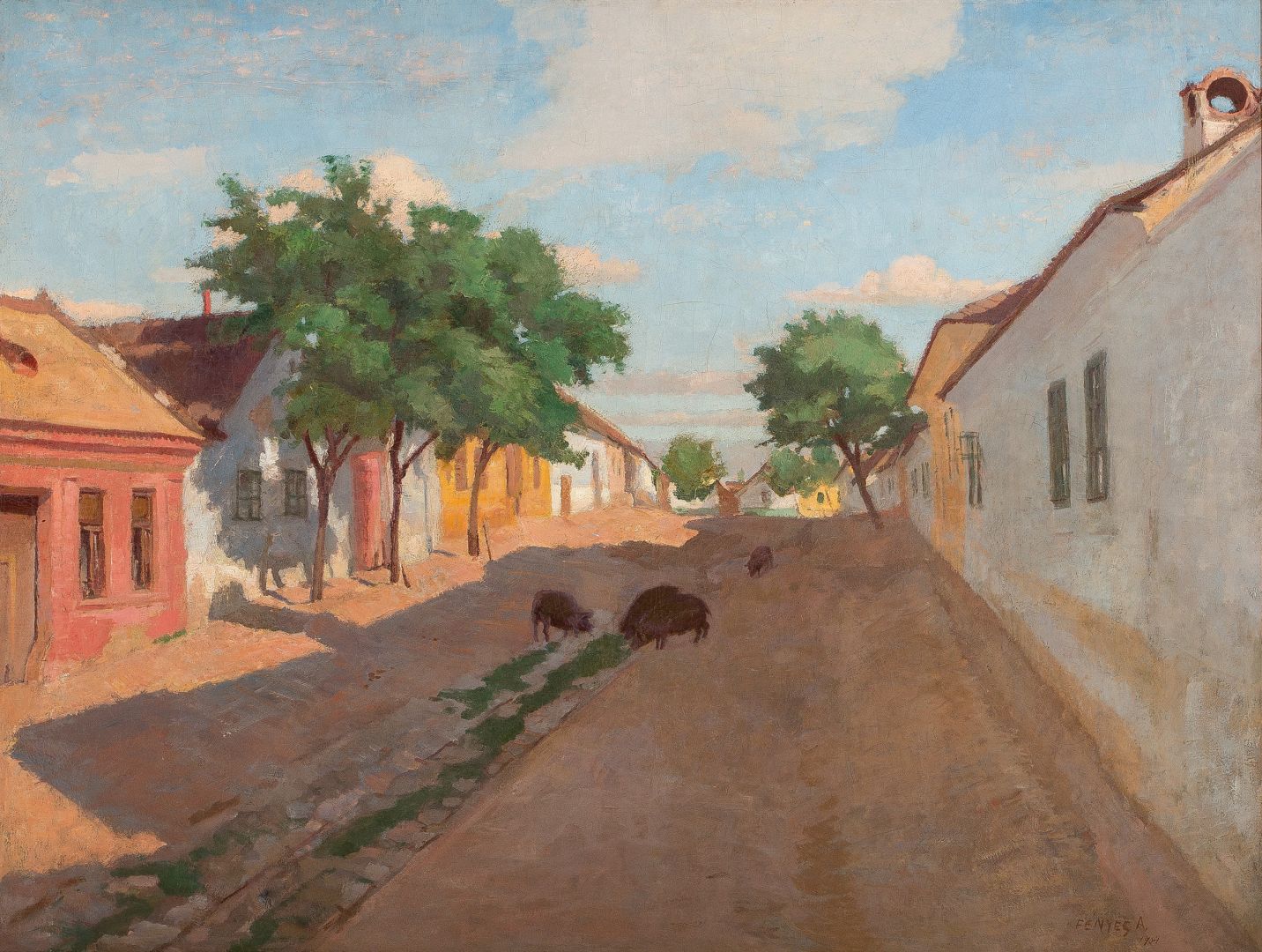Hall 2 - 6. view
Street in Szolnok with Black Pigs
FÉNYES, ADOLF (1867–1945)
Street in Szolnok with Black Pigs, 1904
oil on canvas, 110x145 cm; marking at the bottom right: Fényes A. 1904
Fine Arts Collection, Inv. No.: 78.181.
The In addition to the Carpenter, Adolf Fényes was also represented in the former gallery of the museum with a rural small town street scene. Fényes was from the same generation as the masters who founded the Nagybánya School of painting (such as Károly Ferenczy) and was also a contributor in the renewal of Hungarian painting during the first decade of the 20th century with plein air paintings, which he began making a few years later his peers, after the creation of his more realist works. However, instead of Nagybánya (Baia Mare), Fényes had closer ties to Szolnok, with some sources claiming that he regularly visited the town (and painted there) in the early 1890s, even though his autobiography states that his first visit was in 1899. Nevertheless, the renowned artist was one of the founding members of the Szolnok art colony in 1902, after which he spent many of his summers there. Due to being from Kecskemét and his childhood experiences from the Great Hungarian Plain region, it was easy for Fényes to feel at home in Szolnok. His other favoured creative locations at time were Vác and Szentendre.
The year when Street in Szolnok with Black Pigs was made is a significant milestone in the oeuvre of the artist. In addition to several small town and village landscapes, Fényes also created his famous work titled Shelling Beans the same year, which is one of his finest Impressionist style painting, characterized by fresh and decorative colour effects. The painting Street in Szolnok… has the same light-filled picturesque qualities as Shelling Beans, albeit at an unusually large size, which somewhat lessens the intensity of the composition. The impressive size of the horizontal image compels the viewer to feel as if he is a part of the painting and not a mere spectator, while also suggesting that, apart from the staffage provided by the swine, the street section is depicted in an calm and empty state. This way, the attention of the viewer can focus on the pure spectacle, thus giving significance to the otherwise frugal subject matter through the painter’s perspective. Depth of space is shown by the inward-stretching rows of houses on both sides as well as along the lines of the ditch stretching diagonally across the middle of the dirt road, with increasingly smaller visual elements, often depicted with a single blot of paint. If one uses the right wall plane as the viewpoint instead of the centre, the image layout becomes asymmetric. The harmonic and cheerful atmosphere of the street’s sunlit and shaded areas are emphasized by the use of lighter and darker surface colours and the composition itself is made vibrant through the use of contrasts and reflections. Every element emphasizes the colours brought on by daylight and the visually pleasing sight it creates, including the long shadow cast by the row of houses, which is done with several shades of blues, purples and greys, further highlighting and complementing the lighter areas, which separate from the darker right side of the composition along a diagonal bisector. As with most landscapes made by Fényes from this period, the creative force becomes almost palpable to the viewer through the smoothness and the thickness of the facture. Instead of decorative village people, purplish-black pigs digging in the ditch are used as the figurative elements.
The painting was purchased by Borsod County at the Miskolc exhibition of the 1910 Upper Hungary traveling exhibition. It was donated to the Herman Ottó Museum by the Borsod-Abaúj-Zemplén County Council in 1978.
Ákos Barkóczi
